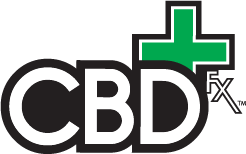
Word came out of Albany late Wednesday afternoon that legislators had reached an agreement on the language of legislation regarding the legalization of adult-use cannabis. There are two competing bills for the law – the Cannabis Regulation and Taxation Act (CRTA) and the Marijuana Regulation and Taxation Act (MRTA). The word is that the bill that was agreed upon included the contentious home grow issue, delivery, social consumption, and the removal of the license auction. However, there is no confirmation on the actual language that was included which could receive a vote next week. It is expected that it will take at least one year before sales can take place.
“I believe New York is the progressive capital of the nation—not just because we say it is but because we perform that way. And legalizing cannabis is this year’s priority to be the progressive capital of the nation,” Cuomo said in a briefing with reporters on Wednesday. “We won’t be the first, but our program will be the best.”
The legislation will still need to be written into the budget and it could still be changed and be rewritten. “It is my understanding that the three-way agreement has been reached and that bill drafting is in the process of finishing a bill that we all have said we support,” state Senate Finance Committee Chair Liz Krueger told Bloomberg Government on Wednesday.
Medical marijuana is already legal in New York, but this legislation would legalize recreational cannabis use for adults 21 years old and up. Krueger said that there would be a 13% sales tax, 9% of which would go to the state and 4% to the localities. Distributors additionally would collect an excise tax of as much as 3 cents per milligram of THC, the active ingredient in cannabis, with a sliding scale based on the type of product and its potency.
One of the biggest issues holding back negotiations was the ability to grow cannabis in the home. The rumor was that six plants per person would be allowed with 12 plants per household. Home grow wouldn’t begin until 2024. Another issue is that localities would be able to deny delivery, retail and home grow.
Krueger also said that there would be no changes would be made to the taxes already imposed on marijuana sold for medical purposes. Some of the additional discussed aspects of the law included:
- The state Health Department would be required to study devices that are supposed to test saliva to determine if a person is impaired from marijuana, though there’s skepticism among lawmakers about the effectiveness of such technology.
- Police would be allowed to use the odor of cannabis to identify impairment, though they could not use it to justify a search a vehicle.
- Driving while impaired from marijuana would result in a violation, rather than a misdemeanor. However, that component may be further revised before the final bill is released.
- The state’s existing medical cannabis program would also be changed to expand the list of qualifying conditions and allow patients to smoke marijuana products. Patients could also obtain a 60-day, rather than 30-day, supply.
The governor’s office estimates that a legal cannabis program could pull in about $350 million a year once fully implemented. Existing medical dispensaries could add four additional sites under the proposal, two of which would have to be in underserved areas, she said. Registered medical marijuana organizations would be able to add two adult-use dispensaries, Krueger said.
Matt Hawkins, Founder and Managing Partner of cannabis-focused PE firm, Entourage Effect Capital said, “Great news that a three-way agreement for adult-use cannabis has been reached in the state of New York. This potential $2.5B marketplace will have a similar monumental impact on the industry as California’s adult-use passage in 2016. We at Entourage Effect Capital look forward to investing in the state upon legalization.”
Many believed that the language from the MRTA was the predominant language in the negotiated bill. The social equity issue looks to be addressed in the creation of a fund versus specific licenses, but that could still be changed.
The MRTA:
- Under the MRTA there are still two arrestable offenses: sale to a person under the age of 21 and the unlicensed sale of over a pound of marijuana.
- The MRTA establishes 21 as the legal age of use for marijuana and marijuana products.
- The MRTA establishes the Bureau of Marijuana Policy to assume regulatory responsibility of the marijuana industry. The Bureau will be housed within the existing State Liquor Authority and will undertake the similar purpose of providing oversight, promulgating regulations, and issuing licenses.
- Under the MRTA, individuals over the age of 21 are allowed to cultivate up to 6 plants at home and retain the fruits of those plants.
People who have been convicted of low-level possession (including possession in public view) and low-level sale will have that conviction vacated from their record. - Under the MRTA, the Bureau of Marijuana Policy will award licenses to produce, process, test, dispense, distribute, and deliver marijuana.
- The MRTA restricts vertical integration to provide the maximum amount of space for new companies to develop and contribute to a New York-focused market.
- Tax revenue will be used to conduct studies analyzing the impacts of marijuana legalization on public health, public safety, youth use, the state economy, the environment, and on the criminal justice system. Additional funds will be distributed to study the efficacy of New York’s regulations and their success in ensuring diversity and inclusion in licensing
- The MRTA does not touch the Compassionate Care Act and the medical marijuana program that it established
The CRTA:
- The CRTA would establish the Office of Cannabis Management (OCM) within the Division of Alcohol Beverage Control. The OCM would be governed by a five-member Cannabis Control Board, appointed by the governor, to oversee the adult-use, medical, and cannabinoid (CBD) hemp industries. Under the governor’s proposal, the governor would appoint all five members and the chair, who would also serve as the board’s executive director.
- The CRTA removes delivery licenses and mandates that cultivators and/or processors wholesale adult-use products through licensed distributors.
- The CRTA mandates the OCM to establish a Social and Economic Equity Plan (the Equity Plan) that “actively promotes racial, ethnic, and gender diversity in the adult-use cannabis industry and prioritizes applicants who qualify as a minority and women-owned business, social equity applicant, or disadvantaged farmer and which positively impacts areas that have been harmed through disproportionate enforcement of the war on drugs.”
- The CRTA sets forth a local opt-out provision whereby all counties and cities with a population of 100,000 or more residents would have the opportunity to pass a local law, ordinance, or resolution by a majority vote of their governing body to opt out of the adult-use cannabis program. Local governments that participate in the adult-use cannabis program will be able to further regulate the time, place, and manner of cannabis operations through zoning powers.
The post New York Legalization Takes Big Step Forward appeared first on Green Market Report.



No comments:
Post a Comment